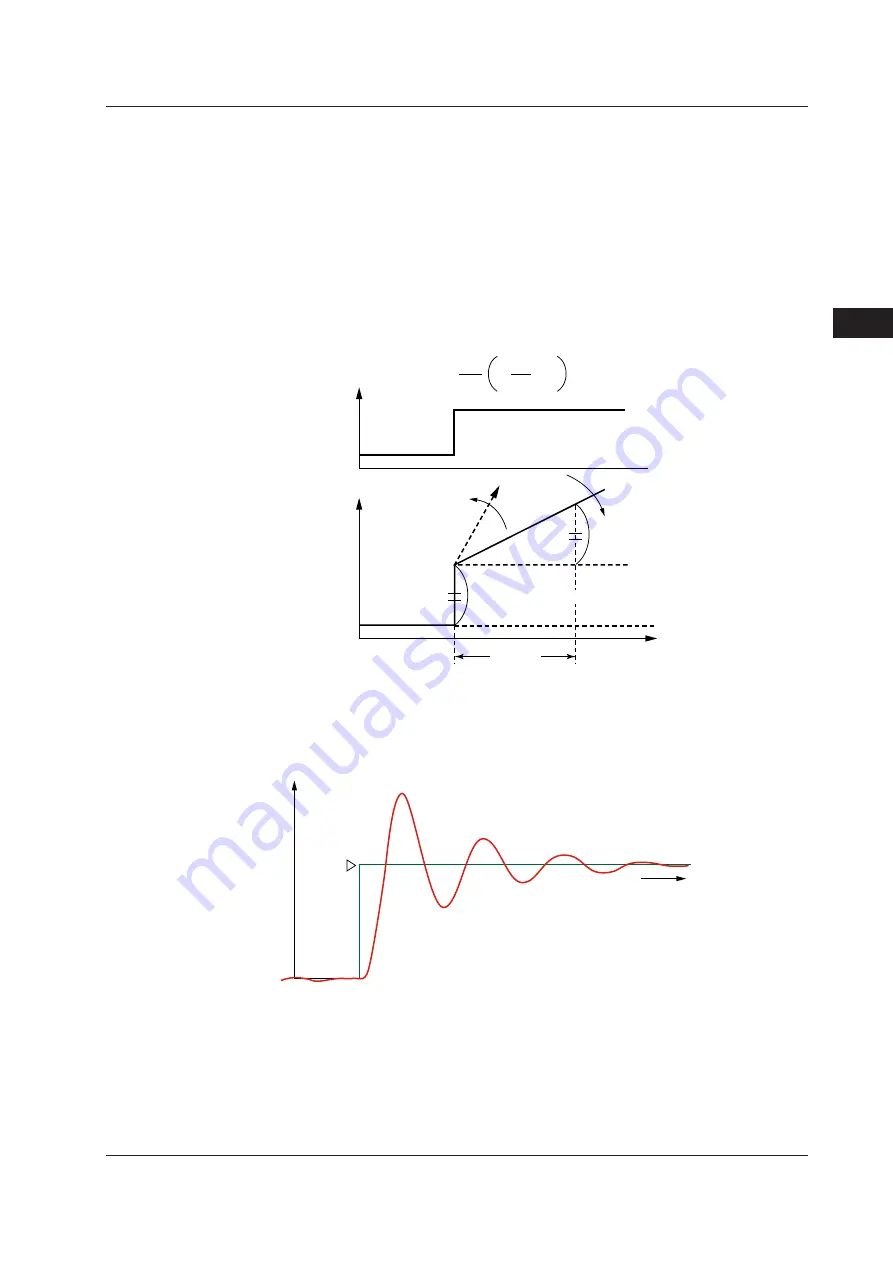
6-17
IM 05P01D31-01EN
Monitoring and Control of Regular Operations
6
Description and Tuning of Integral Time
The integral action (I action) is a function that will automatically diminish the offset
(steady-state deviation) that is inherently unavoidable with proportional action alone.
The integral action continuously increases or decreases the output in proportion to the
time integral of the deviation (the product of the deviation and the time that the deviation
continues.)
The integral action is normally used together with proportional action as proportional-
plus-integral action (PI action).
The integral time (I) is defined as the time required to develop, when a stepwise change
in deviation is imposed, an output change due to integral action that is exactly equal to
the change due to proportional action. The longer the integral time set, the slower the
change in output; the smaller the time, the faster the output changes.
Output
= e +
edt
100
P
1
T
1
e : Deviation
T
I
: Integral time
Deviation
Output (%)
(On-time ratio)
Small integral time
P = 100%
Large integral time
Output change due to I action
Output change due to P action
Time
Integral
time
∫
To manually tune the integral time
• The main goal is to reduce the offset.
• Adjust from longer time to shorter time.
• If you see an oscillation at a longer period than that seen when the proportional band
is too narrow, then you have made the integral time too short.
SP
Temperature
Time
• If I is too short, long-period oscillation will appear in
the measured temperature.
Use the manual reset (MR) to cancel an offset when the integral action is disabled.
► Manual reset: 10.8 Canceling Offset of PV and SP (Manual Reset)
6.4 Adjusting PID Manually
Summary of Contents for UT Advanced UT32A
Page 3: ......
Page 21: ...Blank Page...
Page 35: ...Blank Page...
Page 45: ...Blank Page...
Page 53: ...Blank Page...
Page 89: ...Blank Page...
Page 135: ...Blank Page...
Page 143: ...Blank Page...
Page 255: ...Blank Page...
Page 337: ...Blank Page...
Page 339: ...Blank Page...






























